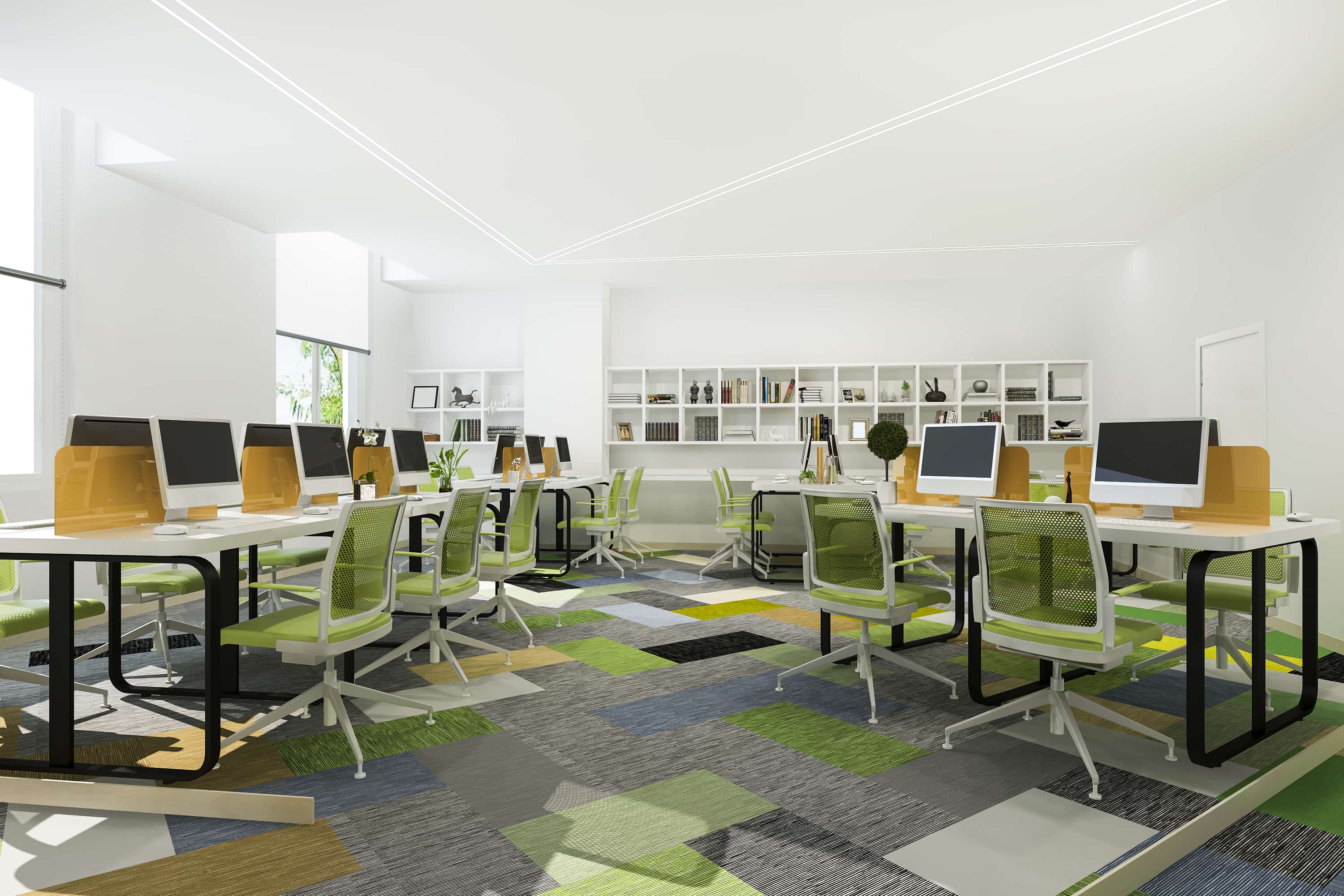


When it comes to designing a space, carpets often serve as an afterthought. However, a well-chosen carpet can do wonders in elevating the aesthetics of any interior design. Carpets offer an artful way to add color, texture, and warmth to a space, making them an essential element of interior design.
Carpets have been used as decorative elements for centuries, and for good reason. They serve as an anchor to the room, tying together various design elements such as furniture, wall art, and curtains. Carpets provide a base upon which other design elements can be layered, creating depth and complexity in a space. From Persian rugs to modern geometric designs, carpets come in a variety of styles and textures, each with their unique appeal.
One way to use carpets in interior design is to choose a rug that complements the existing color scheme of the room. For example, if the walls are painted in a neutral color, a bold, patterned rug can add interest and drama to the space. On the other hand, a carpet with a muted tone can help create a sense of calmness and tranquility. The choice of color is crucial as it can set the tone for the entire space.
Another way to use carpets in interior design is to play with textures. A shaggy rug, for instance, can create a cozy and inviting atmosphere, while a flat weave carpet can provide a sleek and modern look. Combining various textures, such as a silky smooth rug with a woolen carpet, can add depth and interest to the room.
Carpets also have a practical aspect in interior design. They can help absorb sound, making a space quieter and more comfortable. They also provide insulation, keeping the room warm in the winter and cool in the summer. In addition, carpets are softer than hard surface floors, making them a safer choice for households with young children or elderly residents.
When choosing a carpet, it's essential to consider its placement in the room. A large rug can define a seating area, while a smaller rug can accent a piece of furniture. The choice of material is also important as it can affect the durability and maintenance of the carpet. For example, a high traffic area may require a more robust material such as nylon or polypropylene, while a bedroom may benefit from a plush woolen carpet.
In conclusion, carpets play a vital role in interior design aesthetics. They offer an artful way to add color, texture, and warmth to a space while providing practical benefits such as sound insulation and comfort. Carpets can tie together various design elements and serve as the anchor of the room. When choosing a carpet, it's essential to consider its placement, color, texture, and material, to ensure it complements the existing design scheme and serves its intended purpose. Carpets truly provide art underfoot, adding to the beauty and functionality of any interior space.
On the subject of designing an area, carpets regularly serve as an afterthought but a well-selected carpet can do wonders in raising the aesthetics of any interior design. Carpets offer a clever manner to add coloration, texture, and warmth to an area, making them an essential element of interior layout.
Carpets were used as ornamental factors for hundreds of years, and for desirable purposes. They serve as an anchor to the room, tying together numerous layout factors such as furnishings, wall artwork, and curtains. Carpets offer a base upon which other design factors can be layered, creating intensity and complexity in an area. From Persian rugs to fashionable geometric designs, carpets come in a selection of patterns and textures, every with their particular attraction.
One manner to apply carpets in interior layout is to select a rug that complements the prevailing color scheme of the room. As an example, if the partitions are painted in a neutral shade, an ambitious, patterned rug can upload interest and drama to the space. However, a carpet with a muted tone can assist create an experience of calmness and calmness. The selection of coloration is important as it can set the tone for the whole area.
Another manner to apply carpets in interior design is to play with textures. A shaggy rug, as an instance, can create a relaxed and welcoming surroundings, while a flat weave carpet can offer a sleek and present day look. Combining diverse textures, inclusive of a silky smooth rug with a woolen carpet, can upload depth and hobby to the room.
Carpets also have a practical issue in interior layout. They are able to assist in sound, making an area quieter and more relaxed. They also offer insulation, keeping the room heat within the iciness and cool in the summertime. Similarly, carpets are softer than hard surface floors, making them a more secure preference for families with younger youngsters or aged residents. Whilst choosing a carpet, it is vital to keep in mind its placement inside the room. A huge rug can outline a seating place, whilst a smaller rug can accent a bit of furnishings. The selection of fabric is also vital as it could affect the durability and preservation of the carpet. For example, a high traffic vicinity may additionally require a much better material consisting of nylon or polypropylene, while a bedroom might also benefit from a plush woolen carpet.
In conclusion, carpets play a crucial position in interior design aesthetics. They offer a suave way to add color, texture, and warmth to a space whilst presenting realistic advantages consisting of sound insulation and luxury. Carpets can tie collectively diverse design factors and function as the anchor of the room. When selecting a carpet, it's crucial to not forget its placement, color, texture, and fabric, to ensure it enhances the present layout scheme and serves its intended cause. Carpets clearly provide artwork underfoot, adding to the splendor and functionality of any indoors space.